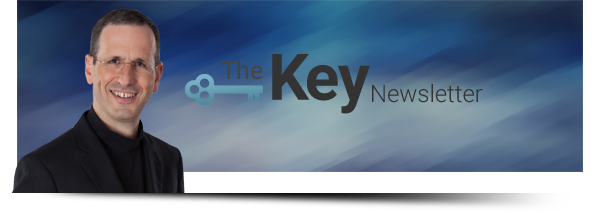Hi Leader,
What business are you in?
Your response to this question reveals volumes, not just about where your organization is today, but about its ability to achieve its desired future. The answer also drives your hiring criteria. I propose that changing one key criterion will have a dramatic impact on whether your company thrives or merely survives. Before revealing this new criterion, let me first provide some context.
Our strategy workshops with senior executive teams are designed to equip these leaders with the mindsets and tools necessary to disrupt their markets and deliver differentiated business results. Our premise is that if leaders don't work to shape and create their company's future, the organization is doomed to react to its competitors, which means they will determine its future.

Listen here: Episode 74 - The New Hiring Criterion
We begin these strategy workshops with an invitation for leaders to enter the learning zone. I encourage participants to discover what's working well, and to identify growth and development opportunities, by engaging in the Air Force debrief practice and by making it a habit going forward.
By entering the learning zone, people activate the brain's plasticity. Limbic plasticity allows them to see old problems in new ways, and to develop novel options and solutions because it creates new circuitries in the brain. When they apply these new perspectives to imagine their company's desired future, they create a series of immensely exciting and plausible horizon 3 stories about how the organization can develop, grow and thrive.
Taking time during the workshop to develop some future stories is critical to the process of unleashing participants' creativity and encouraging innovation. By allowing the team members to expand their individual and collective imaginations and open their eyes to a much wider range of options, they then are able to consider outcomes they've not explored previously.
Once the leaders have experienced the power of innovative thinking, they collectively are able to develop a picture of the future (horizon 3) that is exponentially more ambitious than they had imagined previously, and to identify a series of strategic themes in horizon 2 that will bring the desired future to life.
To integrate their new learning into their quest for the organization's envisioned future, the team engages in a series of future-shaping conversations that are guided by a deliberative inquiry process. Here are some areas of focus, and the questions that elevate the ensuing discussions:
- Culture: How will we build an organizational culture that will enable and sustain the future we imagine? How will we hold ourselves accountable for making this change?
- Operating model: How will we work together and interface with our stakeholders effectively?
- Measures: What metrics will hold us accountable to our vision and objectives and help us accelerate results?
- Organizational readiness: How will we build a fit-for-purpose organization?
- Capability: What capabilities will we build?
To begin the capabilities conversation, I propose to the team that the most impactful decisions they make as leaders are the qualities they look for in the people they hire. Experienced executives know firsthand that hiring choices can be the difference between a struggling organization and one that thrives.
I ask the team, in light of their newly generated vision, which competencies the organization will develop and hire to become future-ready. To make optimal hiring choices, the team must be clear about its purpose. It may gain the requisite degree of deep insight by reflecting on and answering some fundamental questions such as:
- What business are you in?
- What will you do to ensure your business evolves in the desired direction?
- What new requirements will you meet?
An organization's ability to thrive depends on how its leaders answer question #1 above, as that response will drive their decisions about the unique expertise they must acquire or develop. Many leaders believe they are in the knowledge business. In fact, the "We are in the knowledge business" mantra was a prime mental model in the early 2000s. I propose, however, that the velocity of change in the world has provoked a significant landscape shift that forced many companies to change their answer to the question, "What business are you in?"
A growing number of leaders now realize that acting on the premise that their organizations are in the knowledge business is inaccurate and unnecessarily limiting. Instead, their thinking has evolved to enable them to declare, "We are in the learning and innovation business."
This realization leads us to the issue of the new hiring criterion. The old criterion for hiring was to select applicants for what they knew. The new hiring criterion is people's "learn-ability" - their aptitude for learning and developing in the future to keep up in a dynamic environment.
More than ever before, innovation is not a solo job. Rather, it is a by-product of co-emergent learning facilitated by an open and collaborative work environment that brings together the diverse talent that innovation demands. Because the aptitude for learning is critical for organizational success, astute leaders seek people who bring to the table a variety of processing and learning styles. In addition, organizations require individuals who can mesh, integrate and stimulate collaborative learning within the team.
Now it's your turn. Turn the key. To foster a future-ready organization, hire passionate learners, people who are excited to come to work to develop new capabilities and skills. Build a coaching environment in which people debrief and learn together. Frequently demonstrate your own learning and tell team members you hold yourself and them accountable for fostering and sustaining a learning culture. Then you will be ready to implement the plan you have created to achieve the audacious future you envision for your organization.

